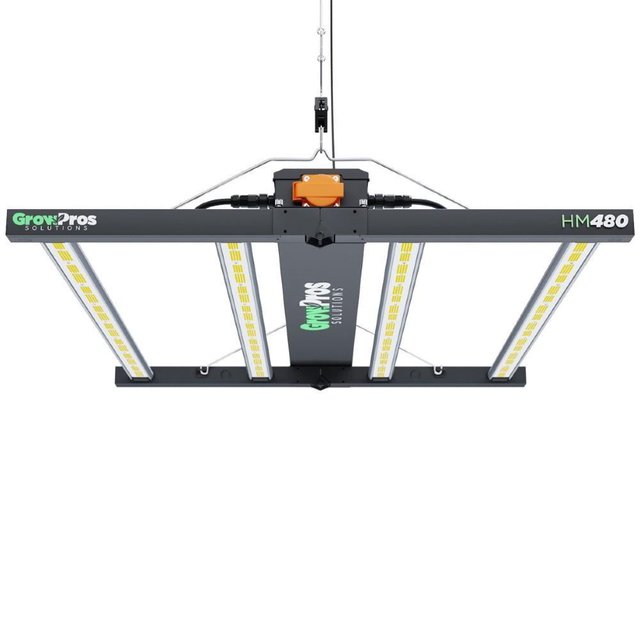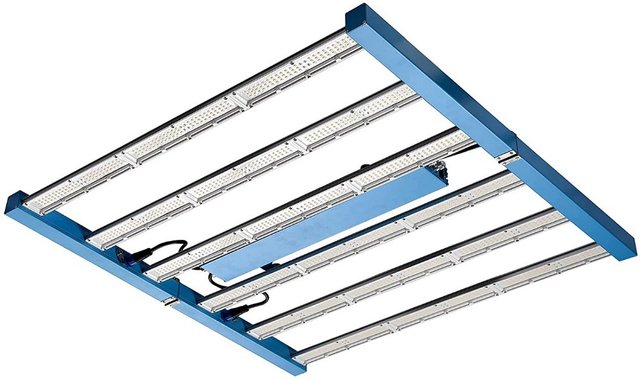Plants need proper sunlight exposure to grow, develop, bloom, reproduce, survive and produce. Due to fluctuating environmental conditions, it is impossible to grow favorite plants and vegetables year-round. Growers can easily grow plants in enclosed rooms by providing the right growing conditions and coverage as needed.
Growing plants indoors can’t get enough sunlight, and growers can easily solve the problem by installing the highest quality grow lights and LED grow lights in the grow room.
The benefits of using LED grow lights
Many people think that indoor plants can only survive on natural light coming through windows. However, if you want your plants to grow healthily and beautifully and produce more flowers or fruit, an extra light source will help. Indoor growing with LED grow lights is the most efficient way to replicate sunlight. So what are the benefits of using LEDs?
They are more efficient. LED grow lights use only half the energy required by fluorescent grow lights. They are better for the environment and tax less on electricity bills.
They have higher light intensity. As the plant grows, you don’t need to move the LED lights as you would with fluorescent lights, as they emit enough energy to keep the plant alive throughout its growth cycle.
They generate less heat. LEDs emit less heat than fluorescent lights. LEDs operate 80% cooler than fluorescent bulbs. Why is this important? Because overheating can lead to higher ambient temperatures, higher electricity bills, a higher likelihood of plants burning, and more difficult humidity control. Also, when your lights are cooler, you can move them closer to your plants, increasing the plant’s available energy.
Longer life. LEDs last up to 50,000 hours, which equates to over 2,080 days of full-time use, Fluorescent, HPS, CMH, and MH bulbs last 1/5 the life of LEDs, making LEDs more cost-effective over time, reducing Hazardous waste in the environment.
Features:
This GrowPros grow light, with an increased lifespan over traditional grow light sources, cultivates healthier, happier plants. The HM480 Series produces 1.8 gram per watts (dried) of crop yield. A high-PPFD and PAR indicates high efficacy, or light output produced per expenditure of unit of power. Generating about 50% more in energy savings over traditional HID and HPS light sources, the HM480 gives you meaningful savings over time. Will not produce the same results without CO2 supplementation. A full-spectrum LED rack lighting solution designed for commercial indoor and greenhouse applications, enabling control over the plant cycle from the vegetative stage to the flowering stage.
SideKing SK5000 LED Grow Light
Features:
This SideKing LED grow light is compatible with 1188pcs Samsung LM283B+ 3800K (3000K+4000K+5000K) LEDs, 60pcs 660nm Red LEDs and 12 pcs 740 nm IR LEDs, which can optimize the plant grow performance at every growth stage from seed to harvest. The plant will respond to it rapidly, speeds up flowering time, and boost yields. The grow light boasts a High-Efficiency Rating of PPF per Joule reach up to 2.8μmol/J, providing powerful light output and enhancing canopy penetration to resulting in a higher-yielding footprint, Veg coverage is 5 x 5 ft, Flowering coverage is 4 x 4 ft. Running 50% less power consumption and 50% more harvest than HPS light.
How to Decide the Size of your LED Grow Light?
1. The Type of Plants you are Growing
Before you choose your LED lights, consider what it is you’ll be growing, how big it will grow, and how much space it’s going to require on its journey from seedling to flower or fruit. Obviously, the type of plant you are growing plays a considerable part in the size of the LED lights you choose. Smaller plants may require less light, with the lights in closer proximity to the plants and less light coverage. Larger plants will require more light coverage that covers a more extensive surface area. All high-quality, full-cycle LED lights are capable of growing a plant from a seedling to a flower.
2. The Size of your Growing Space
How much space you have will ultimately determine how much light you need. If you’re working with a large area, you have a lot of choices in what you grow, where you place your lights, and how many LED grow lights you use. On the other hand, if you’re restricted by space, then you’ll have to carefully consider how many plants you grow, how big they will grow, and what size of LED grow light you need?
A good rule of thumb when growing anything indoors is to have a minimum of 32 watts of LED for every square foot of your growing space.
As an example, if you have a 16-foot growing area, your LED requirement would be approximately 500–550 watts. If you’re growing plants that flower or bloom, they should flourish under these light conditions. However, if you’re growing fruits or vegetables, they will grow using about half the recommended light.
Below is a quick reference guide for calculating how much LED light you need in your grow space:
Grow Space Wattage
4 Square Feet (2 x 2) 120 Watts
6 Square Feet (2 x 3) 200 Watts
9 Square Feet (3 x 3) 300 Watts
12 Square Feet (3 x 4) 400 Watts
16 Square Feet (4 x 4) 500 Watts
20 Square Feet (4 x 5) 640 Watts
25 Square Feet (5 x 5) 800 Watts
3. The Size of your Grow Tent
If you’re using anindoor grow tent, it will determine the size of your grow lights. When you purchase your grow tent, it will include the exact size details. You can use this sizing in conjunction with the chart in the section above to select how much LED grow light you need.
Most reputable grow tent manufacturers will include recommendations for lighting with their grow tents, including maximum lighting sizes.
Conclusion
In conclusion, when looking to create the most dynamic, high-yielding grow light system, there are many benefits to choosing LED grow lights over traditional light sources. It must be noted, however, that these benefits are not automatic, especially when transitioning from HPS to LED. A number of environmental and operational factors must be considered, including grow room-specific light operation, spectrum, intensity, installation height, lighting and watering schedules, carbon dioxide supplementation, heating, roof ventilation, light intensity, insulation, use of heat shields , climate location, and more.

